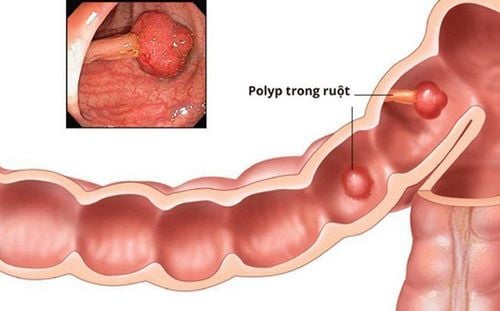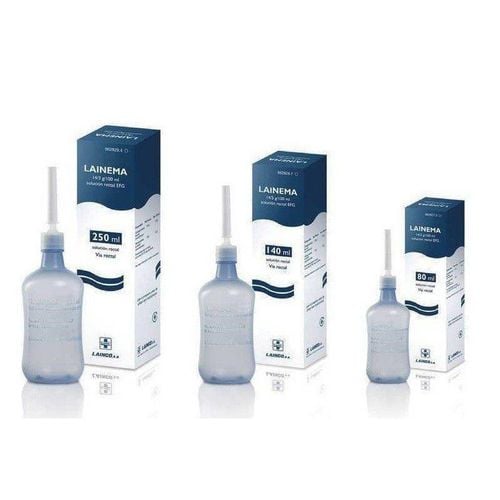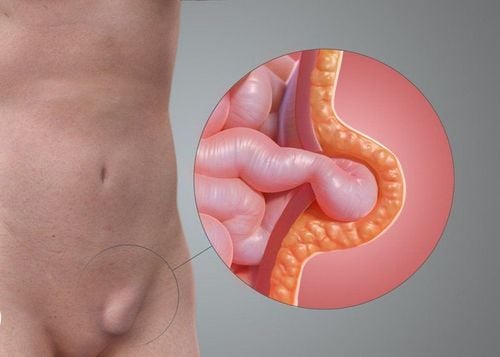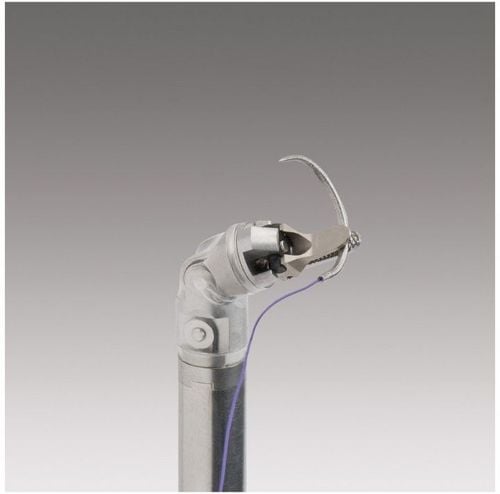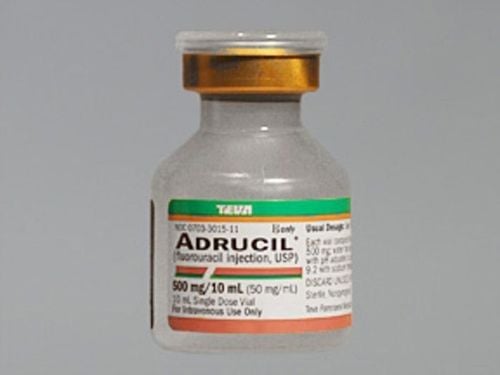This is an automatically translated article.
The article was written by doctors from Internal Oncology Department, Vinmec Times City International General Hospital.When detecting polyps in the colon or rectum, patients often wonder whether they have colorectal cancer or not. When do polyps need surgery? Please refer to the article below to understand the causes and treatment of the disease.
1. What is colorectal polyps?
Some types of glandular polyps (called adenomas) have the potential to become cancerous, while others (hyperplastic or inflammatory polyps) are unlikely to become cancerous. However, keep the following in mind:
Polyps are common (seen in 30-50% of adults)
Not all polyps will become cancerous
It takes years for polyps to become cancerous
● Polyps can be completely and safely removed.
Also know the number, type, size and location of polyps. People who have had their adenomatous polyps removed will require follow-up testing as new polyps that may develop over time also need to be removed.
2. Causes of colorectal polyps
Polyps are very common in men and women of all races, and factors such as diet and environment play a role in the formation of polyps such as:High-fat diet Diet high in red meat Processing low-fiber diet Smoking Obesity Using aspirin and other non-steroidal anti-inflammatory drugs, a diet rich in calcium can help reduce the risk of colorectal cancer.

Sử dụng aspirin và các thuốc chống viêm không steroid khác, chế độ ăn giàu canxi có thể giúp làm giảm nguy cơ bị ung thư đại trực tràng
Family history and genetics - Polyps and colorectal cancer tend to run in families, suggesting that genetic factors play an important role in polyp development. As a general rule, colorectal cancer screening should begin at an earlier age in people with a family history of cancer or polyps. In addition, some rare genetic diseases can cause a high rate of colorectal cancer at an earlier age. Genetic testing may be recommended for families with high rates of cancer
3. Types of colorectal polyps
The most common types of polyps are hyperplastic polyps and adenomatous polyps. Other types of polyps can also be found in the colon, less commonly
Hyperplastic Polyps - Hyperplastic polyps are usually small, located at the end of the colon (rectum and sigmoid colon), and are unlikely to become malignant and not of concern. It is not always possible to distinguish hyperplastic polyps from adenomatous polyps through endoscopy, often based on histopathological results after polyp removal
Adenomatous polyps - Two-thirds of colon polyps are adenomatous polyps. Most of these polyps do not develop into cancer, although they have the potential to become cancerous. Adenomas are classified according to their size, general shape, and specific features when viewed under a microscope.
In general, the larger the size of an adenomatous polyp, the more likely it is to become cancerous. Therefore, large polyps (larger than 5 mm) should be completely removed to prevent development of cancer and should be examined under a microscope for definitive identification
Malignant Polyps - Polyps containing cancer cells called malignant polyps. The optimal treatment for malignant polyps depends on the extent of the cancer (when examined microscopically) and other individual factors.
4. Diagnosis of Colorectal Polyps
Polyps often cause no symptoms but can be detected during a cancer screening test (such as a colonoscopy), or after a screening test for blood in the stool
Colonoscopy is It is the best way to evaluate the colon because it allows the doctor to see the entire lining of the colon and remove most of the polyps found.
The inside of the colon is a flat, tube-like structure with curved folds. A polyp that appears as a protrusion into the colon The tissue covering a polyp may look like normal colon tissue, or, there may be tissue changes in color or ulceration and bleeding. Some polyps are flat and others have stalks.
Flexible colonoscopy is the best test to check for polyps. Virtual colonoscopy using computed tomography technology is also a way to detect polyps.
5. Removal of polyps
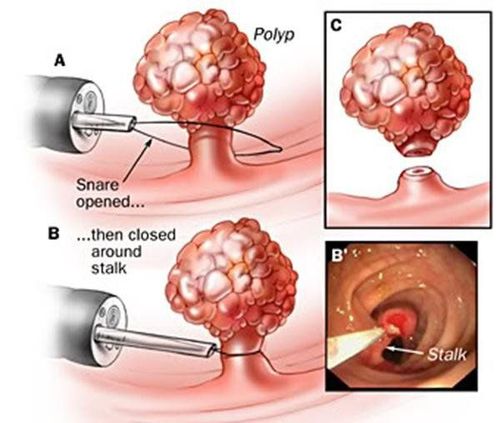
Cắt bỏ polyp trực tràng bằng nội soi
Removal of polyps is painless because the lining of the colon is incapable of feeling pain.
Polypectomy is safe although it does have some potential risks and complications. The most common complications are bleeding and perforation (creating a hole in the colon). Fortunately, this is rare (1/1000 patients undergoing endoscopy). Bleeding can be controlled if it occurs during endoscopy by applying heat (electrocautery) to the bleeding site; Surgery is sometimes indicated if bowel perforation is present.
6. Prevention of colorectal cancer
Follow-up endoscopy - People with adenomatous polyps have an increased risk of developing cancer. About 25 to 30% of cases will reappear on colonoscopy three years after the initial polypectomy. Some of these polyps may have been present on initial examination, but were too small to detect. Other new polyps may also have developed.
After polyps are removed, repeat colonoscopy is recommended, usually one to five years after the initial colonoscopy. However, this interval depends on several factors:
Microscopic characteristics of the polyp. Number and size of polyps. Visibility during colonoscopy. Good preparation before the endoscopy (enema) to remove all traces of stool is essential. If the preparation is not good, stool can remain in the colon, making it more difficult to see small to medium sized polyps. In this situation, a follow-up endoscopy may be recommended as early as one to five years later. Is it possible to examine the entire colon? People who undergo regular screening for colorectal cancer are less likely to die from this type of cancer. Therefore, following screening guidelines is very important in preventing bowel cancer.

Ăn chế độ ăn ít chất béo và nhiều trái cây, rau và chất xơ phòng ngừa bệnh ung thư đại trực tràng
Eat a diet low in fat and high in fruits, vegetables and fiber Maintain a normal body weight Avoid smoking and excessive alcohol use
7. For other family members
First-degree relatives (parents, brothers, sisters) of someone diagnosed with adenomatous polyposis or colorectal cancer before age 60 have a higher risk of developing adenomatous polyps and colorectal cancer compared with the general population. So families should also be informed
Although screening for polyps and cancer is recommended for everyone (usually starting at age 50), people at high risk should start screening earlier .
People who have a first-degree relative (parent, brother, sister or biological child) with colorectal cancer or an adenomatous polyp at a young age (before age 60) or two first-degree relatives At any age, colon cancer screening should be started earlier, typically at age 40 or 10 years younger than the age of earliest diagnosis in their family. Screening is best with flexible bronchoscopy, which should be repeated every 5 years People with second-degree relatives (grandparents, aunts or uncles) or third-degree relatives (grandparents or cousins) with cancer Colorectal cancer patients should be screened for colon cancer similarly to people at average risk. Treatment of colonic polypectomy through flexible endoscopic tube at Vinmec International General Hospital is carried out in accordance with the standard technical process of the Japanese and world endoscopic mucosal resection technique, ensuring effective results. good treatment results and achieve a very high level of safety for patients. Vinmec is also one of the leading hospitals in the successful application of robotic laparoscopic surgery in colorectal cancer treatment.




